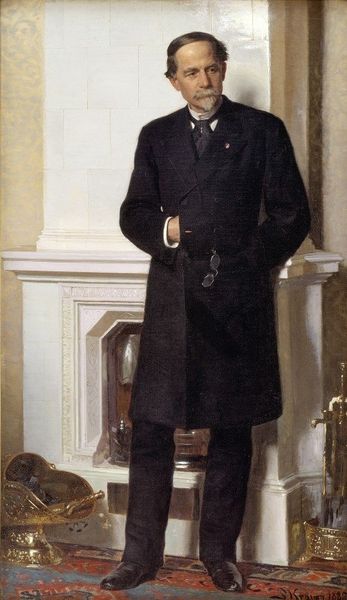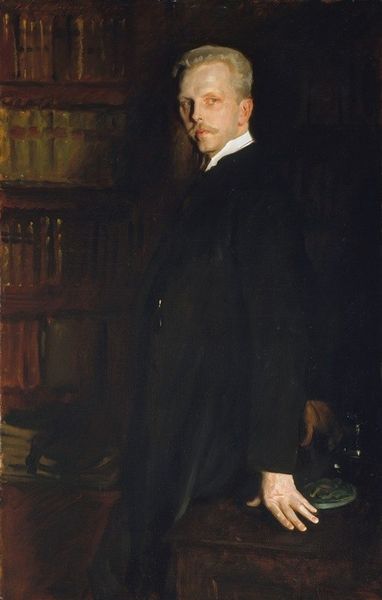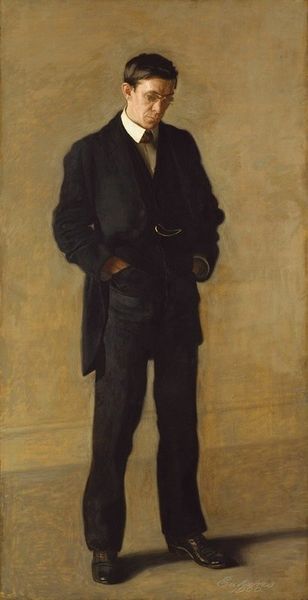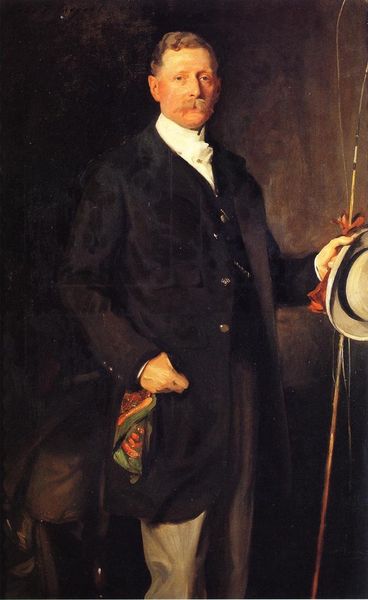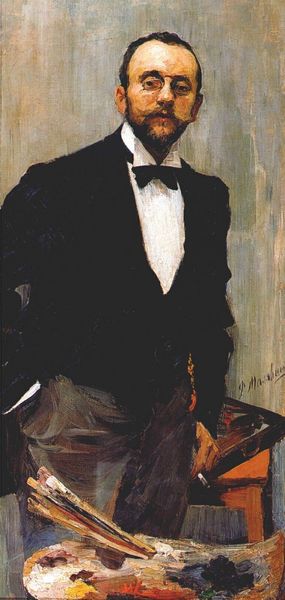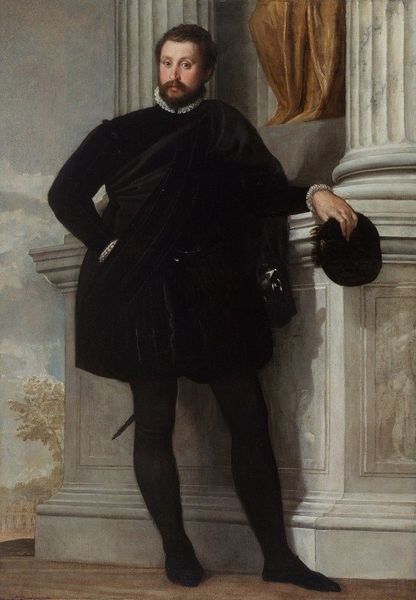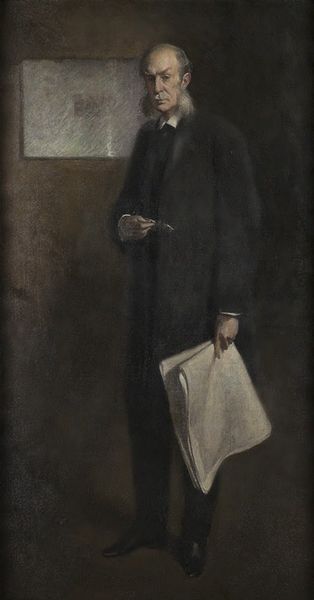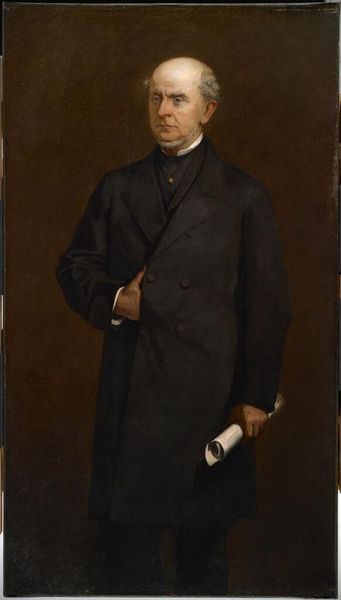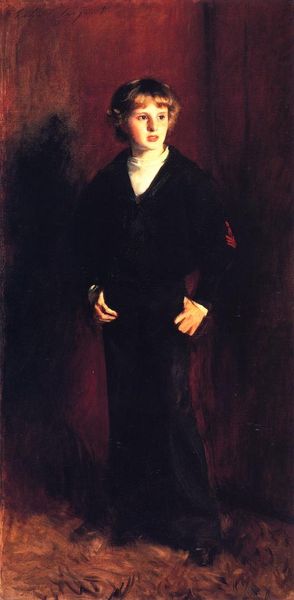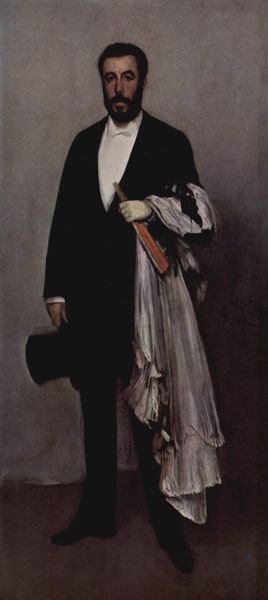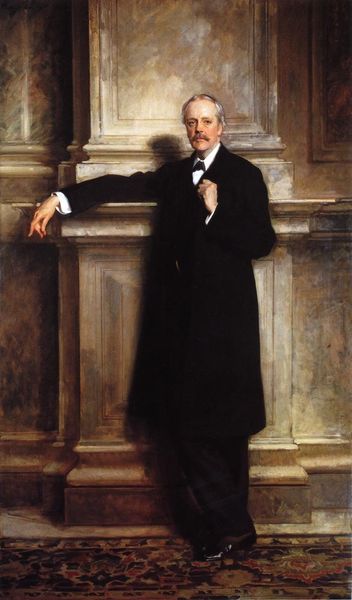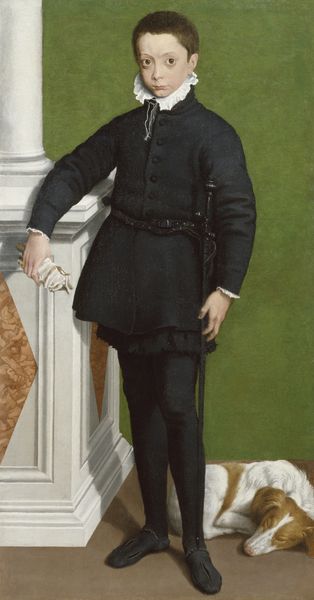
Copyright: Public domain
Editor: So here we have Lionel Noel Royer's "Portrait of Comte D'Adhémar De Cransac" from 1890, done in oil paint. I am immediately drawn to the fur coat – it looks so plush and real. What's your perspective on this piece? Curator: The conspicuous display of wealth, particularly in the materials depicted, is certainly telling. Consider the labor involved in procuring and transforming fur into such a garment. This isn't just a portrait; it’s a statement about power, accessed through the control and consumption of resources and skilled craftspeople. Editor: So you are less focused on his face or position, and more on the materiality? Curator: Precisely. Look at the construction of the staircase. It's marble, right? Someone had to quarry it, transport it, and carve it. Then consider the tailoring of his suit, and that cravat. Every element points back to production, to labor, to a hierarchy of consumption. This man is literally posed on his wealth. Royer is not just painting a portrait; he’s inadvertently documenting a social structure upheld by unequal distribution and the exploitation of labour. Editor: That makes a lot of sense. I never really thought about it that way. The details are almost clues. Curator: They are, pointing to a material reality beneath the surface of high society. The composition itself funnels our gaze upward. Is Royer implicitly critiquing this ascension built upon material excess? Editor: Maybe. It is like the weight of all of those decisions—who made that marble, where did it come from, how was that coat created—add up to be as weighty as the Count's stature in the image. Curator: Absolutely. Shifting our focus from simply aesthetic appreciation to the processes of material production gives us a richer, more critical understanding. Editor: I definitely see this piece in a different light now. Thanks for that!
Comments
No comments
Be the first to comment and join the conversation on the ultimate creative platform.
